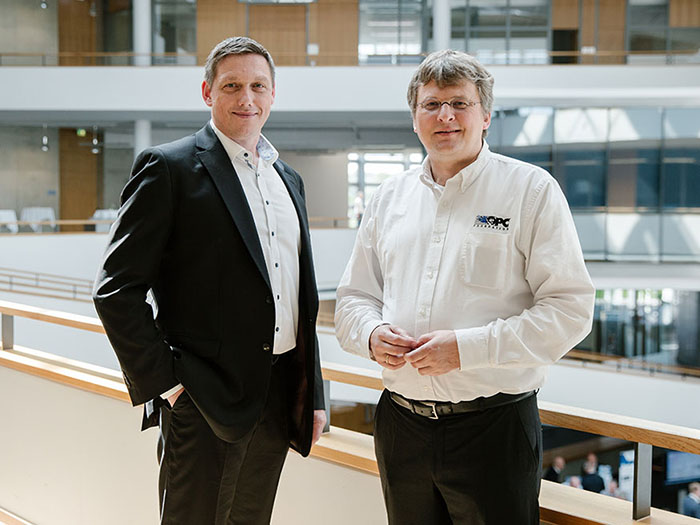OPC UA: a common language for "plug-and-play" production
More efficiency, more flexibility, lower costs: the OPC UA standard allows machines talk to each other, and is one of the key elements for Industry 4.0.
Do you still remember when you would connect something to your PC and it wouldn’t work right away? Back then, just to connect a mouse you had to find the right port, find and install the appropriate driver, and generally sacrifice a lot of time and nerves with the whole process. This all ended with the introduction of “plug-and-play” technology, which allows us to install devices without configuration procedures.
The mouse example is a good image in trying to explain the complexity of industrial processes, including those of the Volkswagen Group: it is like having thousands of mice to connect to PCs that you have to set up again and again, adjusting them to the overall system – while maintaining a huge production flow and manufacturing and logistics processes coordinated right down to the smallest detail. The real situation is actually very similar, because each plant uses different machines, software and interfaces which need continuous regulation so that they function accordingly.
Simplifying communications, unifying standards

There is a solution, however, and it is called OPC UA, which stands for Open Platform Communications Unified Architecture. This is an open machine-machine communications protocol for industrial automation, allowing robots to talk to each other! To simplify, it is like “plug-and-play” for industry.
“Today there are up to 12 different machine languages in use worldwide, which doesn’t exactly make global networking of plants easy,” explains Michael Schweiger, Volkswagen Account & Demand Manager, in other words one of the OPC UA specialists, a team of around 30 people working on this project across all brands in the Volkswagen Group. “There are still many different data building blocks, different communication protocols, all in all a confusion of different technologies. We want to simplify this considerably.” OPC UA allows all robots to communicate with each other, and is therefore one of the key steps towards Industry 4.0.
Greater efficiency, more flexibility

More than 5,000 robots and several thousand control systems are in use at the Wolfsburg plant alone. Considering that the Volkswagen Group has 122 locations worldwide, networking of all these systems would clearly be a huge advantage in terms of efficiency and flexibility, as well as meaning cheaper start-up and installation costs. Employees will also not have to master 12 different machine languages and keep them up to date – only OPC UA.
The OPC UA standard is to be introduced at selected Volkswagen plants by 2022, meaning that it will no longer be necessary to continuously reconfigure each element. It will be possible to connect a new robot to production without having to first program it. The next step will be to integrate suppliers and partner companies in this global data network, while in the long term, it is planned to set up a comprehensive digital industrial infrastructure, including the Volkswagen Industrial Cloud.
OPC UA: a key element for Industry 4.0
The most important buzzword is interoperability, which is “about making it easy to interconnect machines and services from different manufacturers,” explains Stefan Hoppe, President of the OPC Foundation, industry consortium of which the Volkswagen Group is also a member. Today, when you bring a machine into a production line, you have to contract another, third company to integrate it into the system, which can take as much as a week. With OPC UA, the same operation can be performed in 10 minutes: this is why it is a fundamental standard for the development of Industry 4.0.
Source: Volkswagen AG

